Villa Frere & Garden: Malta’s Well Hidden Gem
I love that even after nearly 13 years living in Malta I still manage to discover new places. Just very recently I came across a beautiful and indeed very mysterious garden hiding in Pieta. I felt very privileged to be able to visit it about two weeks ago with my partner and my son during their open day. Every first Saturday of the month general public can visit the premises of Villa Frere. The entrance fee is 5eur, which goes towards the restorations of Villa Frere and its gardens.
This is not just a garden and an old building. It is a national monument! Villa Frere was recently scheduled as a Grade 1 heritage monument. This is the highest scheduling a building can get in Malta. Buildings at this grade have great historical and architectonical value and may not be altered!
There is so much I’ve learned about Villa Frere that I would like to share with you, I don’t even know where to start.

This viewpoint, is the first thing you see once you enter the premises. Offering gorgeous views of the garden with plenty of seating. This is where our tour started. Led by Fernando Mifsud, a landscaper and garden designer, who is focusing on the regeneration of the gardens. I would like to start by telling you a bit more about how this garden came to life.
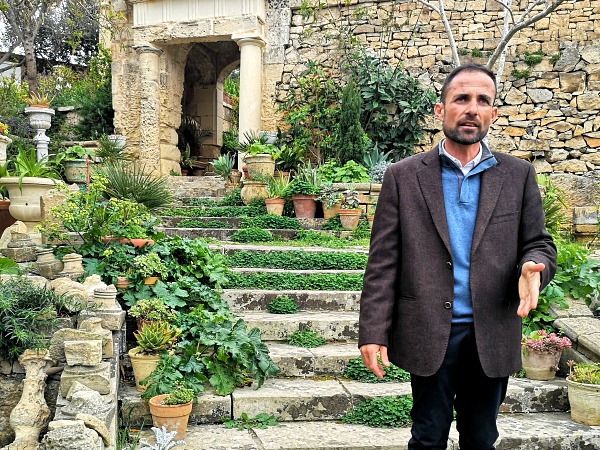

The landscape garden was created by Rt. Hon. John Hookham Frere in the mid-1800s. What you’re seeing today is only a third of the original area (including the house).
John Hookham Frere was born in 1769 and was a British diplomat, poet, scholar and philanthropist. After a career in the Foreign Service, during which he served in Portugal and later in Spain he left the diplomatic service in 1810. In Malta he dedicated himself to his studies – he was a classical scholar, well-versed in Greek mythology and a Latinist.
Frere was married to Elizabeth née Blake, the Dowager Countess of Errol. Due to her poor health she was recommended to live in a warm climate. They settled in Malta in April 1821. They spent their first years in Valletta in Casa Correa (today St Albert’s College stands where it used to be) in Old Bakery Street. Later on Frere found out about a property that was for lease on the seafront of Pieta.
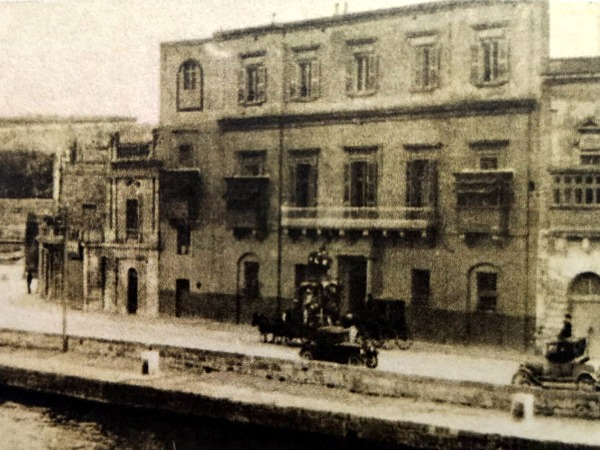
Villa Frere is located on Marina Street, just before the bend on the way to Valletta. A big, three-storied building, painted in a dull brown ochre colour, situated between two old buildings, which date from the times of the Knights – Villa Ciantar and Bezzina House. There was originally only one floor and Frere added the second and Capt. Price third floor.
During the villa’s construction, Hookham Frere and his wife were the guests of the Governor at San Anton. Frere eventually moved permanently to Pietà where he lived with his wife, his sister Susan, his wife’s niece, Honoria Anastasia Blake (later Lady Honoria Hamilton Chichester), and a young girl that he had rescued from hostilities in Greece.
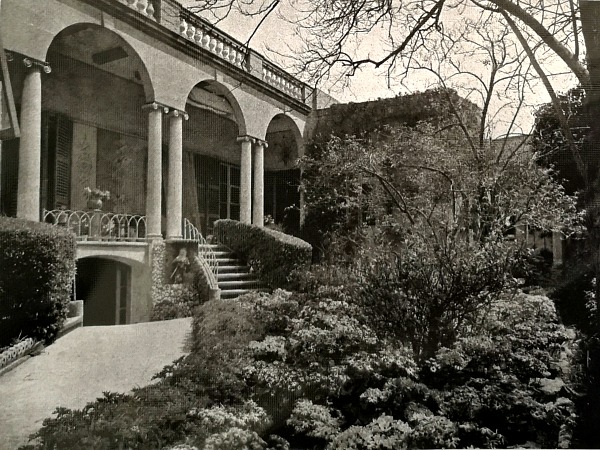
After relocating to Pietà, Frere started some major works to improve the villa, which originally consisted two or three houses joined together. Special attention was given to the creation of a garden from the bare rock behind the villa, which involved extensive expenditure.
The creation of the garden started in 1837. He commissioned the best architects at the time: Giorgio Pullicino, George Grognet de Vasse (the architect of the Mosta dome) and Chief Royal Engineer General Sir George Whitmore.
Frere’s wife Elizabeth died in January 1831 after a long illness and was buried in the Garden of Rest formerly known as the Msida Bastion Cemetery. After her death, he continued to live in the villa and invested a lot of his time, energy and resources to continue creating a beautiful garden behind his house.
Which not only help him to get over the grief of his late wife, but also helped a lot of families, by creating work and employing many people. An English neoclassical terraced garden was created, with a number of wells and features including a Neo-Classical tempietto known as ‘the temple’ at the highest point.
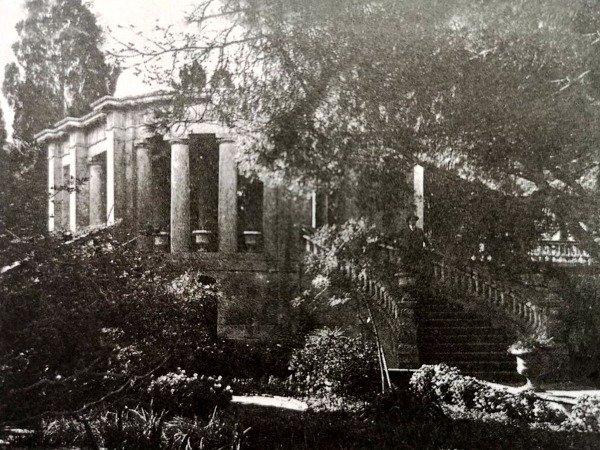
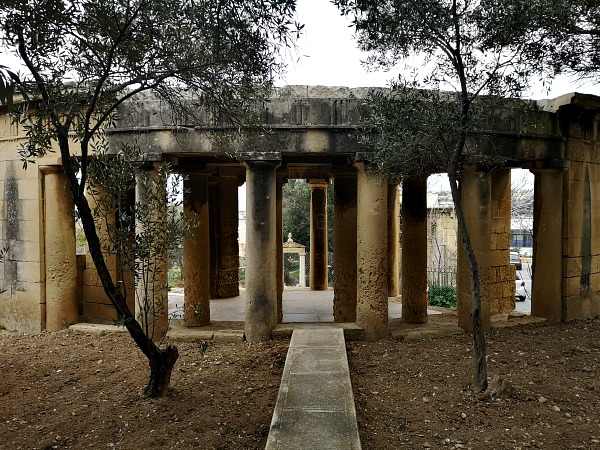
Villa Frere was somewhat an university at the time! Scholars, poets and diplomats could come to Villa Frere to mingle. Hookman Frere even brought Mikiel Anton Vassali, the first Professor of Maltese at the University of Malta, back to Malta from exiles.
Mr Vassali would often come to Villa Frere, where they would together with Hookman Frere discuss important affairs as well as the Maltese language and how to establish it as a written and taught language. Frère sponsored his first books – so you can say that it’s the place where the Maltese written language was born.
On December 7, 1837, Lord Hamilton married Honoria Anastasia Blake, Frere’s niece. Honoria had been living with her aunt in Villa Frere and, after the death of Frere’s wife Elizabeth and his sister Susan, she continued to live there taking care of the ageing John Hookham Frère until his death in 1846 aged 76.
Frere passed away at the age of 76 on January 17, 1846, the day after he suffered an attack of apoplexy. He was buried in the Garden of Rest formerly known as the Msida Bastion Cemetery, across the creek from Villa Frere; Lord Hamilton Francis Chichester superintended the funeral arrangements. The Chichesters continued to live in Villa Frere until Lord Hamilton Chichester passed away in 1854 at the young age of 43.

After that the house was abandoned for decades. In 1876 Count Rosario Messina took up the lease, renovated the house and gave it to his daughter Josephine, who married Capt. Edward Noble Price in 1886, and took up residence at the Villa.
They got married here and lived in the house for 47 years. Captain Price was a keen gardener and extremely interested in horticulture (the art or practice of garden cultivation and management). He was indeed an active member of the Royal Horticulture Society and Villa Frere was its Headquarters. Thanks to his profession, Capt Price had a lot of friends around the world, who would send him exotic plants. Which resulted into the garden receiving the title of a botanic garden.

Captain Price restored the garden to its former glory and added a cactus garden and a Japanese garden, which included a stream, a footbridge, a pagoda gateway, stone laterns, a Buddha shrine and a plum tree. The garden was nominated as one of the most beautiful gardens of Europe.
It was also profiled by Country Life Magazine, a world-leading landscaping periodical, in 1930. It was the first time ever, when Country Life Magazine left the UK, to take a full place photo shoot of a garden outside Great Britain. After which this phenomenal garden of Villa Frere gained international attention.

While the Price family was living in Villa Frere three Queens visited the garden: Queen Mary in 1912, Queen Marie of Romania in 1924 and British Dowager Queen Adelaine in 1929.

During WWII the garden was unfortunately also bombed and most of what remained was destroyed in the early 1950s to make way for the construction of Pieta Primary School, a nursing school, and extension of St Luke’s Hospital including a helipad and a parking area, which ate away two thirds of the garden! The destruction of such a unique garden is shameful to say the least!
From 1952 the house and what remains of the garden are in the hands of the Spiteri family (tal-Klee Klamps). However NGO Friends of Villa Frere together with Heritage Malta have the title of the place and will be soon taking over the premises. Their intention is to restore it and open it fully to the public.

This is Villa Hay. This is the building where Hookman Frere, his sister and wife lived in when they first moved to Pieta. We refer to this house as Villa Hay, as at that time it wasn’t called Villa Frere. If you’re wondering where is the name coming from, it’s because Frere’s wife’s first husband was George Hay, 16th Earl of Erroll.

Now we’re looking at what used to be the gardener’s cottage. This was the house of the head gardener with the stables underneath it. Can you guess how many gardeners both Frere and Capt. Price needed for the upkeep of the 14-tumoli of land? Ten full time gardeners were required to keep the garden in prestige condition!
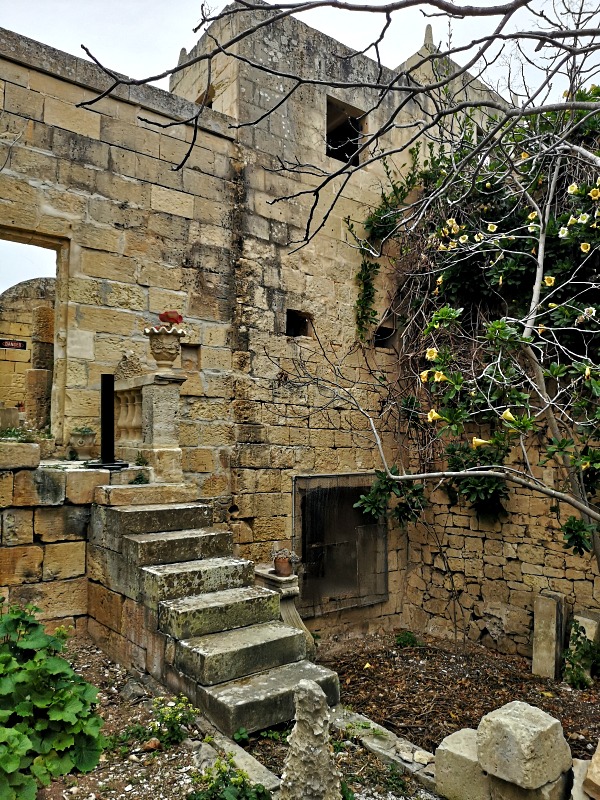
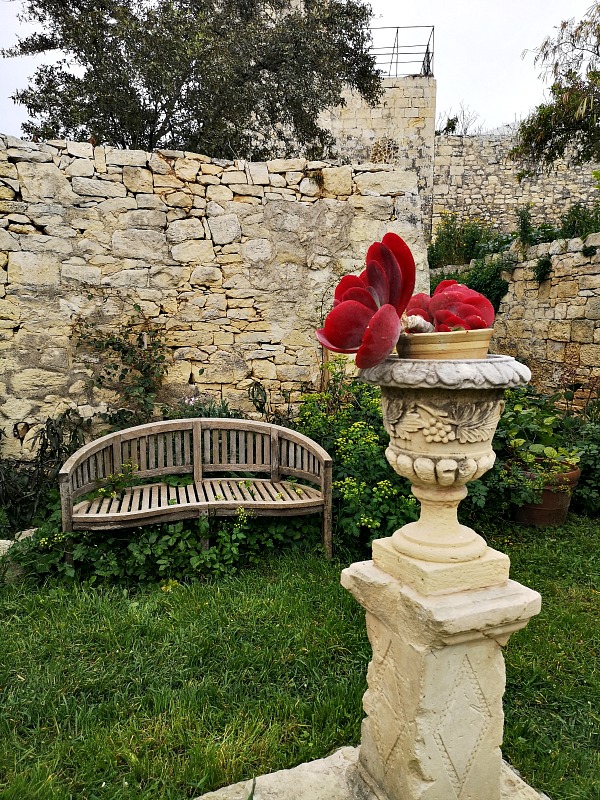
When Frere was creating the upper garden his workers discovered a doline in 1839, very similar to Maqluba but on a smaller scale. It went down to a depth of 19 metres, all the way to sea level, it was filled with clay and he cleaned it all up. To be able to enjoy it from ‘the inside’, Frere opened a tunnel though the rock which led to the doline. Captain Price, however, described this discovery as the ‘dreadful and awful pit’.
When you visit the garden, you can go to the tunnel, but the doline at the end is unfortunately buried it, but the plan is to open it and make it accessible once again.
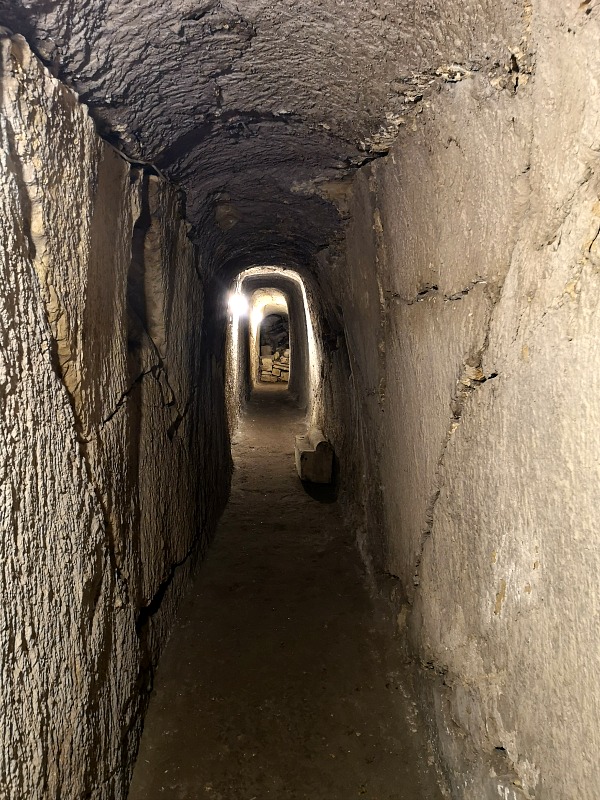
The critical situation of Villa Frere was largely unknown to the public until an architecture student Perit Edward Said stumbled upon it in 2013. He is the founder of the voluntary organisation ‘Friends of Villa Frere’ and their mission is to save what remains of this historic estate. Fernando Mifsud, a landscaper and garden designer, and also our guide for the day, has been for the past few years, along with Perit Edward Said co-ordinating the ongoing restoration efforts.
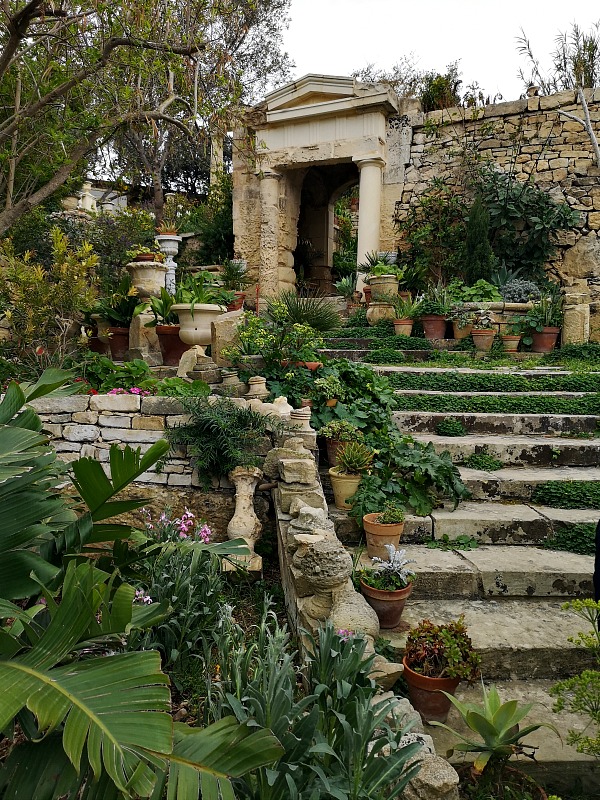

After the guided tour of Villa Frere, we were invited to sit down. Take the time to enjoy some tea and cake that were being sold on site and appreciate the beauty of this glorious garden.
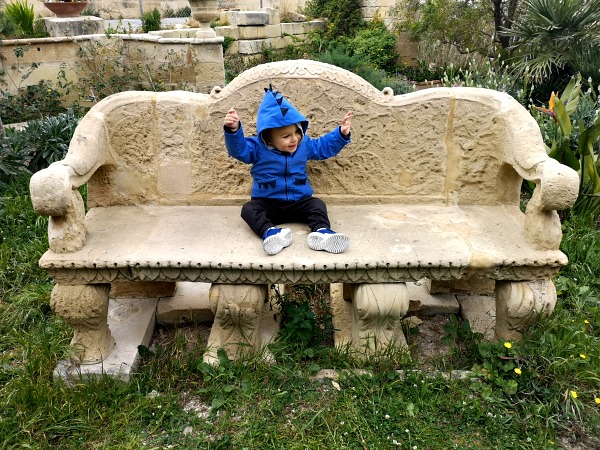
All the volunteers of the NGO Friends of Villa Frere are working extremely hard to make this beautiful place accessible to the public and every time you visit, they open a new area of the garden. As you can see from Oliver’s expression we’ve became a great fans of Villa Frere!
Finally, the best way to get there? Enter the St. Luke’s hospital premises and drive to the very back of the hospital grounds, there will be signs along the way. Villa Frere is open to the public every first Sunday of the month from 9am till 4pm. Entrance fee is 5eur which goes towards the restoration works.
Villa Frere is also featured in my Malta, Gozo & Comino Memory Game Volume 2, which you can purchase here.
There were many articles written about Villa Frere, so here are few links for the most interested readers.
Book: Bizarre Malta
Online:
Inside Villa Frere: Malta’s lost English landscaped garden
Historic villa entrusted to NGO
Beyond the walls of Villa Frère
Heritage Malta teams up with NGO to protect Villa Frere
Fate of Pietà’s Villa Frere garden views hinges on board inspection
Historic garden in total disrepair
The future is bright for historic Villa Frere gardens as Heritage Malta teams up with NGO




Looks amazing, would love to visit sometime!
I was amazed by your details in your Blog , beautiful photos too . This is very emotional for me to see , as I was born in Villa Frere (21/5/58 ). Was given the name ELIZABETH in memory of John Hookham Frere ‘s wife .We the Spiteri family lived there with great memories of us the 7 siblings in the gardens . We all loved the gardens and planted all kinds of flowers , bulbs cacti and succulent and fruit trees like oranges , lemons pear , figs and obviously vegetables especially strawberries . But the grand enormous trees were from the time when John Hookham Frere ‘s gardeners planted them . How I loved to climb the very old oak tree and was always exploring the gardens . The tunnel was cleaned out by my brothers and sisters , as it was packed with derbies of stone and gravel . The tunnel lead to the pit , I would love to enter there . It was just stone and rubble , but the level of the tunnel . It was written in old books that the pit was a wonder with Circulating waters that was unique. Some used to say it was the tip of Atlantis . Many important people came to see this pit . How I wish in my lifetime that it will be rediscovered again ( under the car park ) . Thanks
Today many years later I have a strong passion of gardening . Our garden is filled with different trees , plants , bulbs , cacti and succulents . Seems living my childhood in Villa Frere has left its mark
Thanks so much for this post, John Hookham Frere is my Fourth Great Uncle, and I’m just starting to discover and learn about my Family History. I never knew anything about Villa Frere’s existence until a few hours ago. I appreciate the information your post provides as I don’t know if I’d have ever come to know of any of this. Thank You again.
Here is a link to some photographs of Villa Frere at the time of Captain Price. ………. http://seaburnemay.ca/2017/07/villa-frere-photographs/ ……… and here is an article Captain Price wrote on the gardens in 1924, mentioning the pit that Elizabeth Vella remembers. ……. http://seaburnemay.ca/2017/07/villa-frere/ ………. Enjoy! …. Zen, England